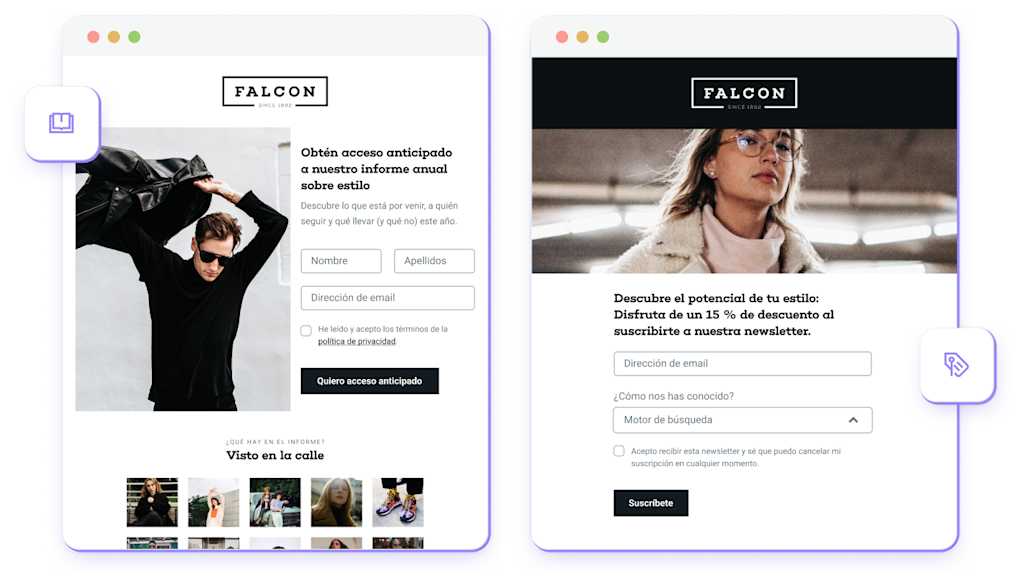Convierte los clics en clientes con las Páginas de destino de Sinch Mailjet
¿Listo para llevar tus emails al siguiente nivel? Utiliza las Páginas de destino de Mailjet para crear páginas específicas e impactantes que potencien tus campañas. Trabaja con el editor de arrastrar y soltar que ya conoces y utilizas para crear emails y formularios y publica páginas de destino sin necesidad de "picar" código.

Más de 40 000 empresas ya desarrollan fantásticas aplicaciones y programas de email con Mailjet.

Genera clientes potenciales
Los formularios y las landing pages de Mailjet son el dúo definitivo para captar información de clientes potenciales. Crea fácilmente una página personalizada de generación de clientes potenciales que guíe a los usuarios hacia tu embudo de marketing a través de contenido con acceso restringido, una suscripción a tu newsletter o una campaña dirigida.
Da las gracias a tus clientes
Mejora la experiencia del cliente dirigiendo a los usuarios a una página de agradecimiento personalizada después de que completen una acción. Ofrece recursos adicionales u ofertas exclusivas para aumentar sus interacciones y conseguir más conversiones.
Promocionar productos
Destaca tus últimos productos u ofertas especiales con una página de destino dedicada y optimizada para la conversión. Adapta tus mensajes y tu diseño para mostrar las características clave, incitando a los usuarios a realizar una compra o a obtener más información.
Haz crecer tu base de suscriptores
Aumenta tu lista de emails con una página de destino dedicada a las suscripciones a tu newsletter. Ofrece contenido exclusivo para atraer inscripciones y aumentar tu audiencia para futuras campañas.
Mejora tus campañas con páginas de destino
Diseña con facilidad

Diseño en 12 columnas
Un nuevo diseño de cuadrícula con doce columnas que te permitirá personalizar tus páginas de destino a tu gusto.
Galería de plantillas
Déjate llevar por las musas o utiliza una de nuestras plantillas prediseñadas para páginas de destino.
Metadatos SEO
Opciones para personalizar los metadatos SEO (títulos y descripciones de las páginas).
Dominio personalizado y favicono
Adapta las páginas de destino a tu marca con una URL personalizada y tu logo visible en las pestañas de los navegadores.

